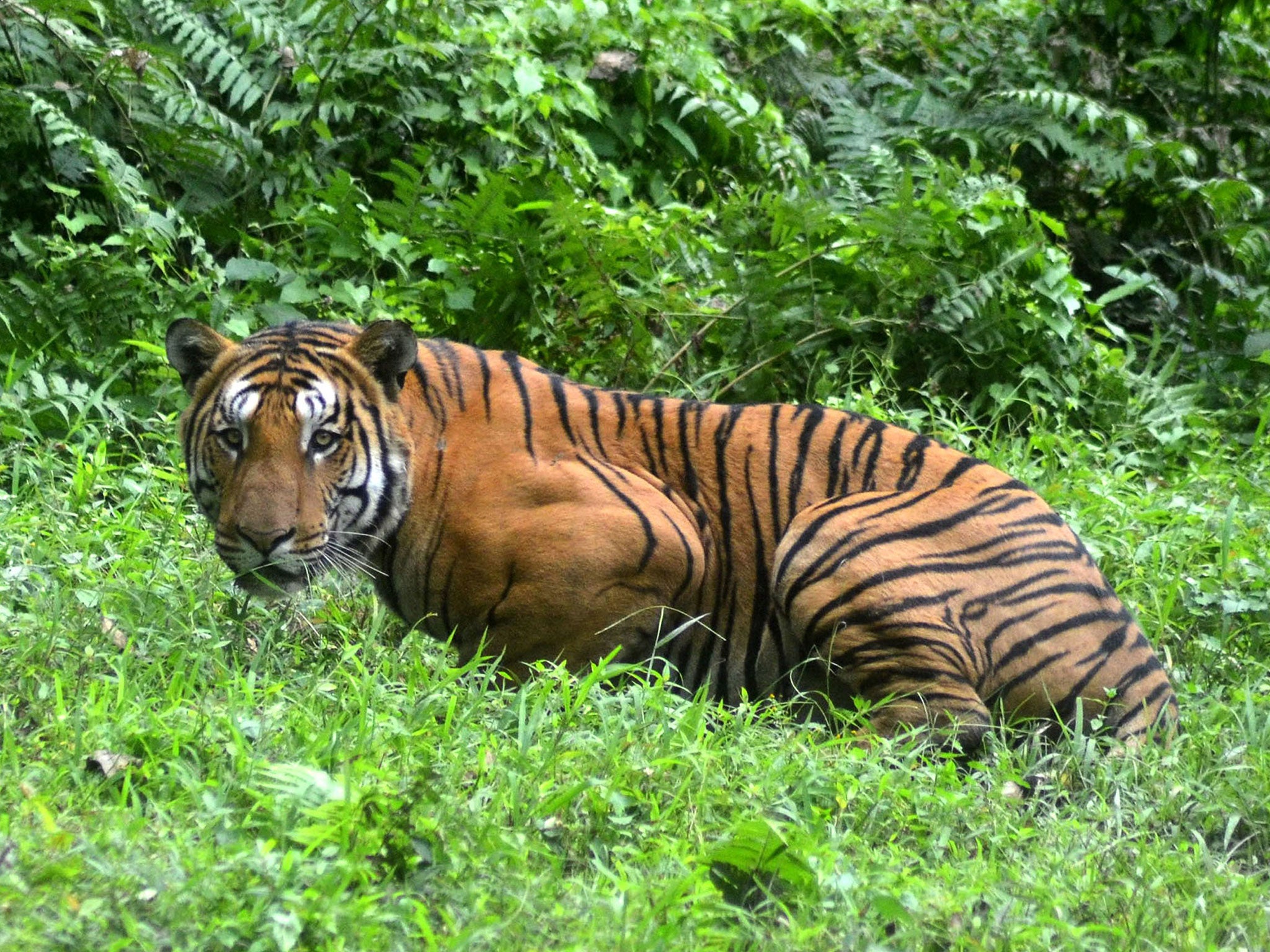The world's tiger population has increased dramatically, mostly thanks to India
India - which accounts for two of every three tigers worldwide - saw numbers grow from 1,411 in 2006 to 2,226 today

The world’s beleaguered tiger population has rebounded dramatically, according to new figures which find that numbers in their biggest habitat of India have soared by nearly 60 per cent since 2008.
Wildlife experts hailed the findings as tremendous news for tigers, pointing to them as evidence that concerted conservation efforts can pay off.
They are particularly pleased with the results because India dominates the global tiger population, accounting for about two of every three of them. The study finds that numbers jumped from a low-point of 1,411 in 2006, to 1,706 in 2010 and 2,226 now, according to The National Tiger Conservation Authority.
“This is a cause for much rejoicement,” said Professor Claudio Sillero, of the Born Free wildlife charity and University of Oxford.
“The improvement comes down to the establishment of the National Tiger Conservation Authority to co-ordinate activity, increasing the budget for protection, extending the areas under protection and putting a lot more people in uniforms on the coal face keeping poachers at bay,” he added.
Ravi Singh, Secretary General at WWF-India, said: “This demonstrates that species conservation works, especially when it brings together political will, strong science and dedicated field efforts.”
While conservationists strongly welcomed the latest figures they pointed out that tigers – in India and elsewhere – remained in danger from poachers for their skins as well as their organs and bones, which are popular in Chinese medicine. Furthermore, shrinking habitats have brought the wild cats into conflict with farmers who live near tiger reserves, leading to further killings.
Professor Sillero pointed out that 81 Indian tigers were lost to poachers in 2014 and said that while numbers in Russia were also rebounding he would like to see other parts of East Asia stepping up their efforts to protect the animal.
A century ago, the number of tigers in India is estimated to have been about 100,000. Their numbers steadily declined until the 1970s, when India banned hunting.
After officially hovering around the 3,000 mark for years, the tiger population suddenly tumbled to a low of 1,411 in 2006, shortly after the counting methodology was changed.
Under the previous system, estimates had been made on the basis of tiger prints – a technique which experts said often led to double-counting. The new technique involved photographing the tigers with hidden cameras – of which there are now about 9,700 – a process which involved less double-counting and which is seen as largely responsible for the official decline in numbers in 2006.
Since then, the counting method has been consistent and a clear trend of improving numbers has been identified.
Join our commenting forum
Join thought-provoking conversations, follow other Independent readers and see their replies
Comments